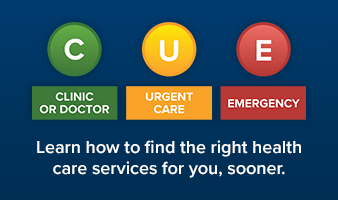Keeping active in these days of social distancing
By Kristine Hayward
Winnipeg Regional Health Authority
Published Monday, April 6, 2020
You won't see it officially listed anywhere as a symptom of COVID-19, but “cabin fever” – that feeling of increasing tedium, irritability and restlessness that often accompanies prolonged stays indoors – is definitely on the rise as we practise social distancing and self-quarantine to prevent the spread of the coronavirus.
That's why I felt such a sense of encouragement this past weekend as I saw an increase in the number of people taking the opportunity to walk or run outside.
The fact is that while exercise will not cure or prevent COVID-19, it will improve your overall health. Physical activity can improve your physical health, helping to manage or prevent many chronic diseases. It also releases endorphins to improve your mental resilience and improve your mood.
It also offers you a much-needed break from elevated levels of screen time and the never ending COVID-19 news cycle. Physical activity will also help your children burn off some of the pent-up energy they have from being indoors.
The question, then, is this: how can we safely incorporate daily activity into our daily COVID-19 prevention routine?
As long as you are not self-isolating, getting outside is a great option – just remember to keep your distance from those you meet along the way, head outdoors only with the members of your household and be sure to wash your hands for 20 seconds when you return home.
If you normally work out with friends, or in groups, consider phoning a friend (always keeping one ear free from your headphones) while you each walk a route close to your respective homes, or track your steps on social media to compete with others. Start a photo journal of your routes and beef up your Instagram game to take your mind off of the COVID-19 news-crush.
If you are still working at an essential service, consider actively commuting to fit in some exercise en route. The City of Winnipeg has expanded its annual bicycle and active transportation route schedule. Starting on April 6, Lyndale Drive, Scotia Street, Wellington Crescent and Wolseley Avenue will limit motor vehicle traffic daily to one block from 8 a.m. to 8 p.m.
For those looking to increase their activity indoors, this is an optimal time to take advantage of the many free online fitness classes and activities available for both adults and children. There is no shortage of options from private and public resources. These include the Wellness Institute, the Reh-fit Centre and Participaction's social media channels, as well as local gyms, YMCAs and yoga studios. You'll find that many of these classes are designed to be done without special equipment, or are tailored to the special needs of older adults or other people with lower mobility. You can also find videos, instructional posters and at-home workouts on Winnipeg in motion's resource section.
Kids and teens should also spend some time outside, unless told to self-isolate. The fresh air and change of pace will help to manage anxiety. Just remember to keep their activities family-centred, avoiding pick-up games with neighbours. Families should not access local parks or playgrounds at this time as the COVID-19 virus can live on surfaces for several days. School-aged kids and teens can head outside for a walk, bike ride or a run, as long as they practise social distancing. They could start a running club with siblings, or engage in some backyard parkour or a living room dance party.
For the youngest set, simply having the space and freedom to be active is essential. Use your imagination. Toddlers and preschoolers need to have opportunities for physical play and to practise fundamental movement skills like running, jumping, hopping and throwing. You can incorporate numbers, colours and letters into dance moves, silly games or obstacle courses around the living room, back yard or the front sidewalk. Learn balance by practising on sidewalk lines, or by balancing on one foot. Play catch inside with a plush toy, or take part in short movement breaks like jumping, running on the spot or dancing between indoor activities. Have kids act out the story as you read a book together. Many neighbours are placing teddy bears in their windows to encourage families to turn their walk into a “bear hunt”.
Teens can connect with their friends using social media and a variety of apps to compare the number of steps, measure distances or set up fitness logs with friends. This will encourage some friendly competition and provide mutual motivation and support to keep moving.
Whatever you choose to do to keep active, just remember you've already done the hard part: you've started moving. Even in these days of social distancing, for the well-being of yourself and others, each of us can maintain a sense of ownership in our health and well-being. Stay active and stay safe.
Note: If you are new to exercise, recently injured or recovering, start with light, gentle activity such as walking. For more information, visit csep.ca for the “Get Active Questionnaire.”
Kristine Hayward is a co-ordinator, WRHA Physical Activity Promotion program, Population and Public Health. This column was published in the Winnipeg Free Press on Monday, April 6, 2020.

